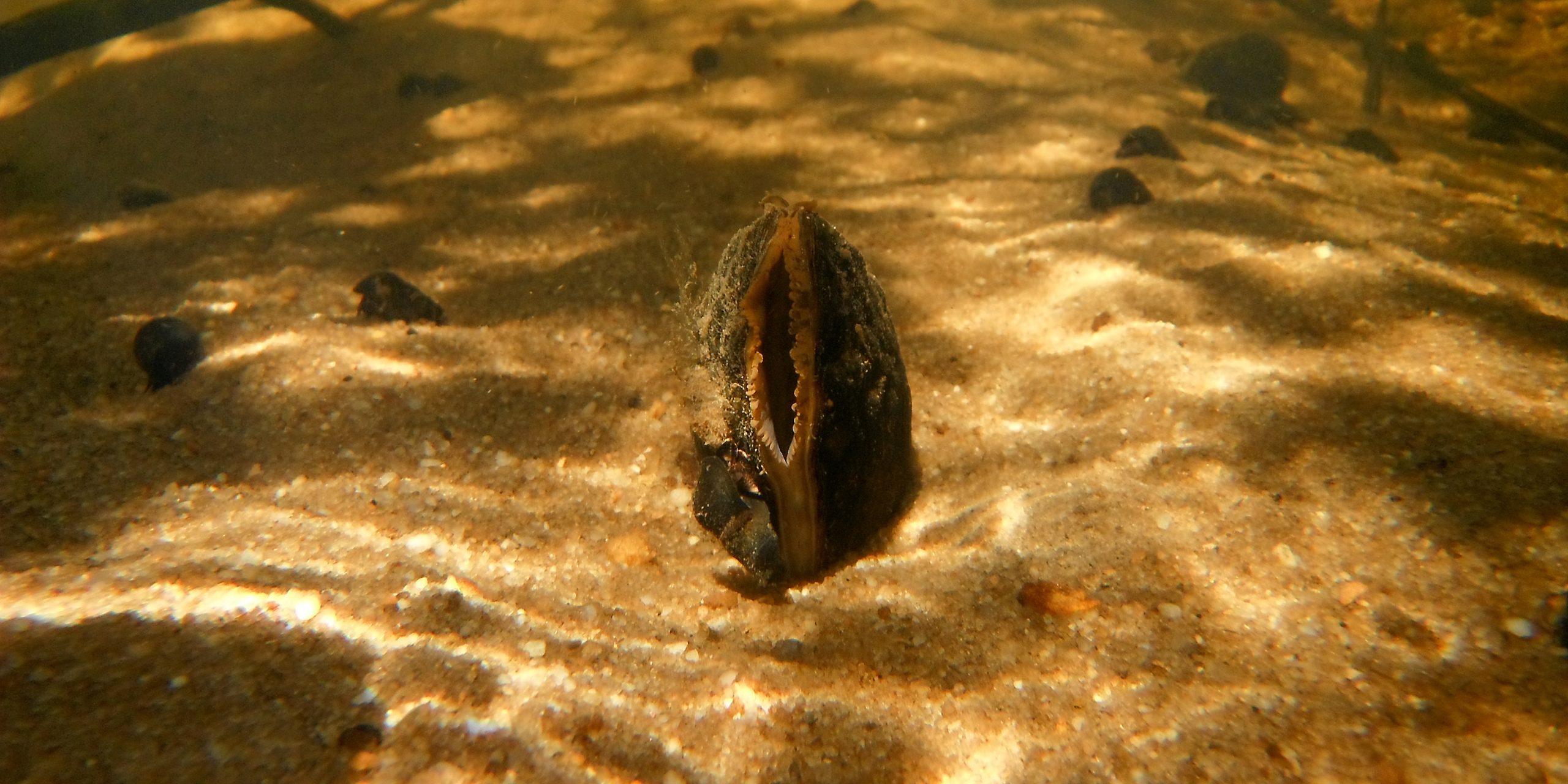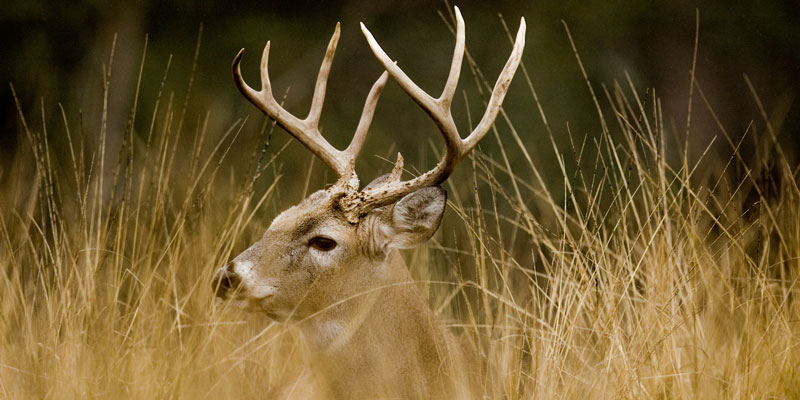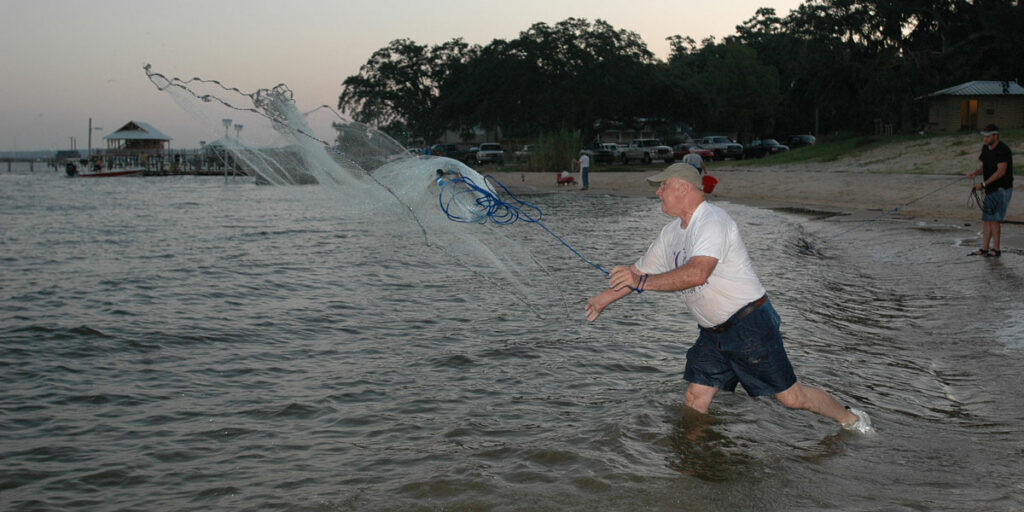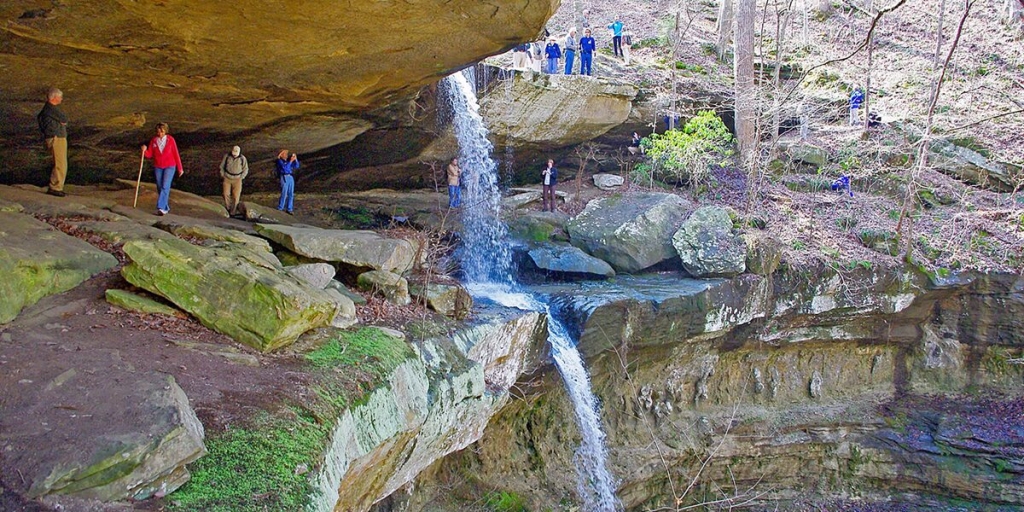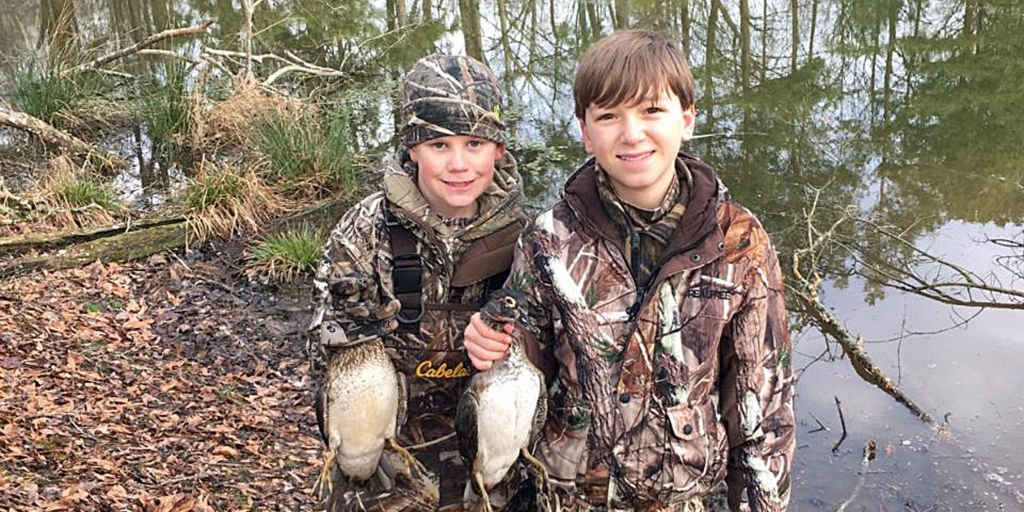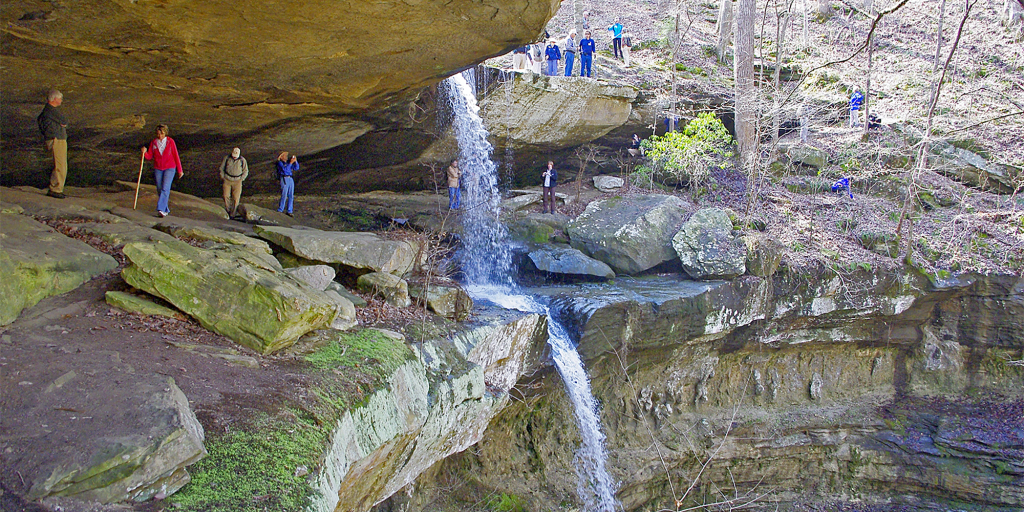Ever wonder why ensuring the survival of a small mollusk in a small creek in south Alabama is such a big deal? The main reason is those mussels are indicators of the quality of their environment, especially the water quality, which translates to the health of the entire ecosystem.
That’s why the Alabama Department of Conservation and Natural Resources’ (ADCNR) Wildlife and Freshwater Fisheries (WFF) Division teamed up with the U.S. Fish and Wildlife Service (USFWS) and Monroe County to protect the habitat of the Alabama pearlshell mussel in a recently completed project.
Paul Johnson, Program Coordinator of the WFF’s Alabama Aquatic Biodiversity Center near Marion, said the presence of the Alabama pearlshells indicates a healthy ecosystem.
“There’s probably no mussel more habitat-sensitive than the Alabama pearlshell,” Johnson said.
Traci Wood, WFF’s Habitat and Species Conservation Coordinator, has been overseeing the Partners for Fish and Wildlife Program in Monroe County, where work was performed on a road crossing at Big Flat Creek to drastically reduce the sedimentation that impedes the survival of several species, including the endangered Alabama pearlshell (Margaritifera marrianae).
“We’ve been in this partnership for about 15 years,” Wood said. “We identify restoration projects with private landowners that are beneficial for species in greatest conservation need. A lot of the species are federally listed (endangered or threatened) as well.”
In this specific case, in partnership with Monroe County, the critical habitat of the endangered Alabama pearlshell that only survives in a few creeks in Alabama was identified in Big Flat Creek, which has been declared critical habitat under the Endangered Species Act (ESA).
“Alabama leads the way with the most aquatic biodiversity in the nation,” ADCNR Commissioner Chris Blankenship said. “Working with partners and private landowners allows us to identify, improve and protect critical habitat for these rare, endangered aquatic species, like the Alabama pearlshell mussel.”
The Monroe County project was designed to improve two creek crossings on John Shannon Road, an unpaved road. The crossings had compromised structures that were causing erosion around the inlet and scouring on the outlet. The project removed the structures and installed reinforced low-water crossings in their place. The design of these crossings will include the use of semi-rigid honeycomb pattern geocell to provide a stable crossing that will withstand the frequent passing of loaded log trucks. Design will include 40-foot approaches, creating a total length of 80 feet. Width of each crossing will be 25 feet.
“Engineers from Monroe County reworked the engineering plan to properly place suitable crossings on this road,” Wood said. “Monroe County used their equipment to install reinforced floodwater crossings. These crossings can accommodate something as large as log trucks. We haven’t had any high water events, so these really need to be looked at this winter. That will put it to a true test.
“This will not only protect the listed mussel species but also create suitable habitat for the Biodiversity Center to have a viable reintroduction site for these Alabama pearlshells to reproduce and thrive.”
The Alabama pearlshell is found in only certain tributaries in Monroe, Conecuh and Escambia drainages. The mussel is a medium-sized species with a maximum width of about 3.5 inches. The inside of the shell has a purplish iridescence that resembles a pearl.
“I think the fact about mussels that people can relate to is that they are always attached to clean water,” Wood said. “The mussels need that clean water in order to survive, but it’s also that mussels are that natural filtering system that helps make clean water. It also has a trickle effect on other mussels and fish species to make the water suitable for them to thrive. Heavy load sedimentation is not conducive for any animal to thrive. The Alabama pearlshell is a highly rare animal.”
Johnson said preserving current populations of the threatened mussel species is extremely important because reintroductions of certain species take a long time.
“It works, but it does not happen overnight,” Johnson said of the reintroductions. “I wouldn’t say any have happened in less than a decade. And we can’t work in areas where the habitat is not stable.”
Johnson said the Alabama pearlshell is definitely sensitive to sedimentation and occurs in a very small range in tributaries of Murder Creek. To show how rare the Alabama pearlshell is, Johnson said one was recently found in Limestone Creek, the first documentation of the species in that area in more than 30 years.
“There are sensitive species, and then there are Margaritiferas,” he said. “These animals really need wide riparian zones. We can reproduce them, but we have no place to set them out. They are interstitial, almost completely buried for two to three years. They have to have really good flow through the gravel in order to grow. If there is a lot of sediment inside the stream, it will smother the juveniles. There are only two species of the Margaritiferas in the state and only five nationally.
“They all have this phase they go through when they are buried that has sediments that are mostly fine gravel-based with coarse sand that allows water to flow through it. They are small-stream specialists and are almost always found on private lands. This project is something along the line of what the Department has done for the Red Hills salamander.”
Johnson said the presence of Alabama pearlshells indicates exceptional water quality.
“They also live where most mussels won’t go, and they are extraordinarily long-lived, 80 years,” said Johnson, who did his dissertation on the Louisiana pearlshell. “They also have extraordinarily high filtration rates. They are extraordinarily fecund (reproduction capacity). They are broadcast spawners that can produce more than 1 million glochidia (larvae). But they don’t do that every year. Far less than 1% survive. It’s like winning the lottery to make it to year one. All of the partners are trying to work with landowners and timber companies to help preserve this rare animal. That’s one of the difficulties of surveying these streams for the mussels. Almost all of them are on private land. It’s the geology beneath the streams in those areas that allows them to live there.”
Wood said the total funding from the Partners for Fish and Wildlife Program also included projects in Crenshaw and Conecuch involving the Alabama pearlshell and other mussel species.
The project in Crenshaw County was designed to reduce the volume of excess sediment entering Horse Creek, and subsequently Patsaliga Creek, from unpaved Cook Stand Road. The project site is located 5.5 miles upstream from the confluence into Patsaliga Creek, which is listed critical habitat for fuzzy pigtoe (Pleurobema strodeanum), Choctaw bean (Villosa choctawensis), southern kidneyshell (Ptychobranchus jonesi), and narrow pigtoe (Fusconaia escambia). The project is also expected to improve habitat for southern sandshell (Hamiota australis) that also occurs in Patsaliga Creek.
In Conecuh County, the project was designed to reduce the volume of sediment entering Murder Creek Strategic Habitat Unit from a river crossing on unpaved Towes Road. This project involved installing a large, 60-foot relief pipe about 60 feet south of the existing river crossing at the site of frequent blowouts during high flow events. A sediment trap has been installed downstream of the relief pipe to reduce the volume of suspended solids before they enter the unnamed tributary of Otter Creek.
“The beauty of the relationships with the county commissions is that they have engineering expertise to design the restoration projects,” Wood said. “And they have the equipment and the people to operate the equipment. It just makes for a turnkey operation for a project because our agency and the U.S. Fish and Wildlife Service come to the table with funding opportunities.”




